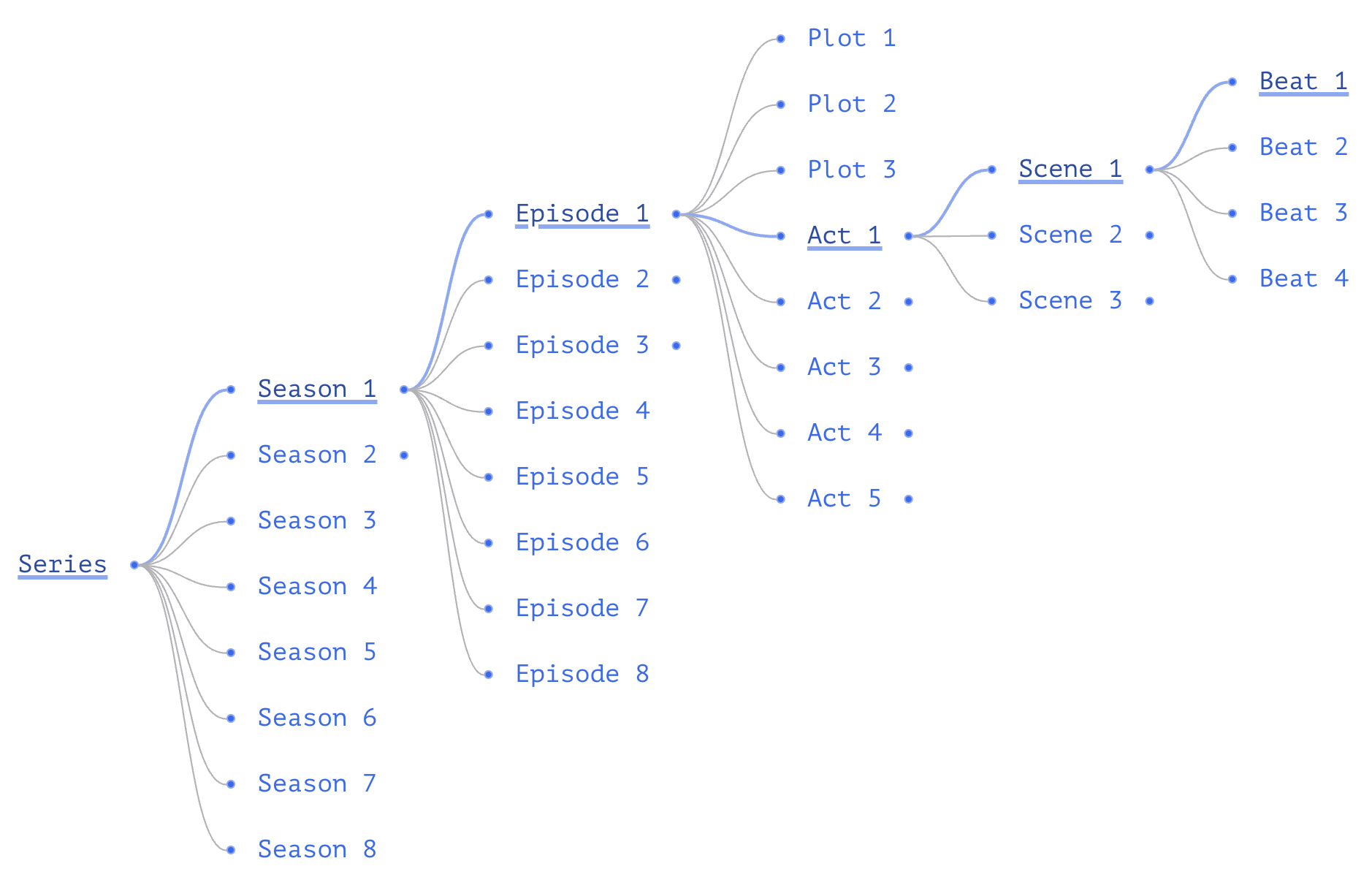Story Structure
What Does It Mean?
When writing classes and popular screenwriting methodologies refer to the structure of a story, they usually mean key moments when something specific is supposed to happen. They will tell you the essential beats that should be in your story and the order they should appear. When the theme should be stated, and where the "depths of despair" moment should go.
Don't worry, PlotRocket isn't offering yet another storytelling formula for you to absorb, nor does it expect you to subscribe to any one in particular (or any at all). We speak about structure in terms of elements that fit together to create the series bible and episode outline, not the semantic meaning or emotional weight of their content.
Whether you use Blake Snyder's Save the Cat, Syd Field's Paradigm, lived experience in writers' rooms, your notes from Dramaturgy 101, or just a reputable screenwriting blog and your own sense of story to help you figure out the content, you'll fit right in.
Story Elements
In PlotRocket, story elements either form a part of the series hierarchy, or they inform the elements of the hierarchy in some way. They are fully described in the introduction.
Here, we will look at the distinction between the two key types:
Structural
- Series
- Season
- Episode
- Plotline
- Act
- Scene
- Beat
Support
- Precinct
- Character
- Setting
- Lore
- Arc
- Arc Beat
Structural Elements
In PlotRocket, the structure of a series is a simple hierarchy composed of a subset of the story elements.
A Series has Seasons, a Season has Episodes, an Episode has Acts and Plotlines, an Act has Scenes, and a Scene has Beats. Everything else is a supporting element.

The Series Structure as Exposed in Map View
Support Elements
Characters and settings appear in the story, but are not part of its hierarchy.
Precinct, lore, and arcs shape the story but are not a part of it.
Arcs have beats, but this is just proto-material that can be used to create scenes and their beats, which are structural elements.
